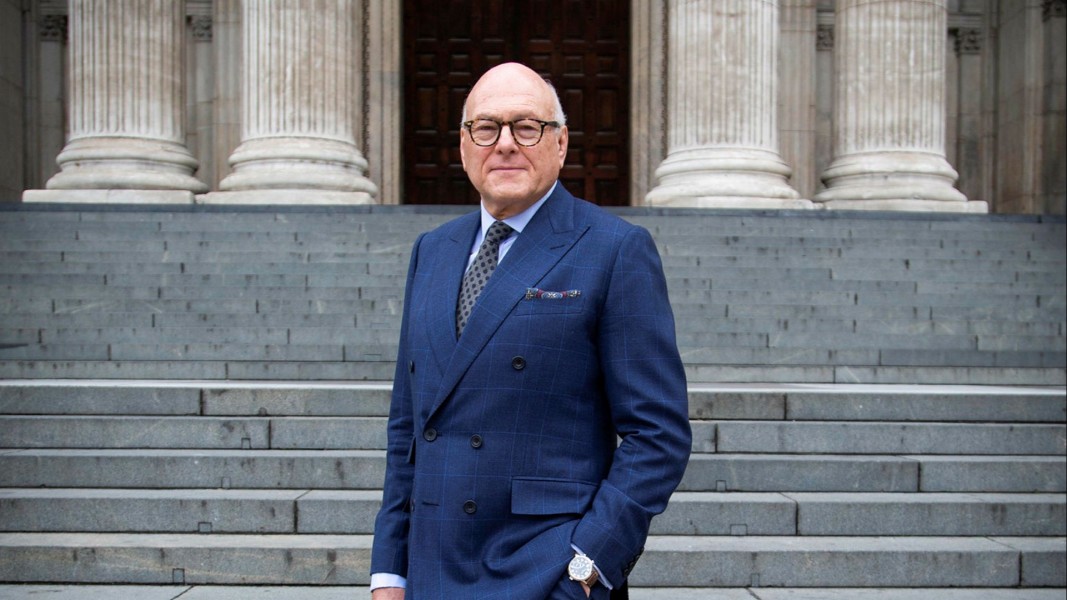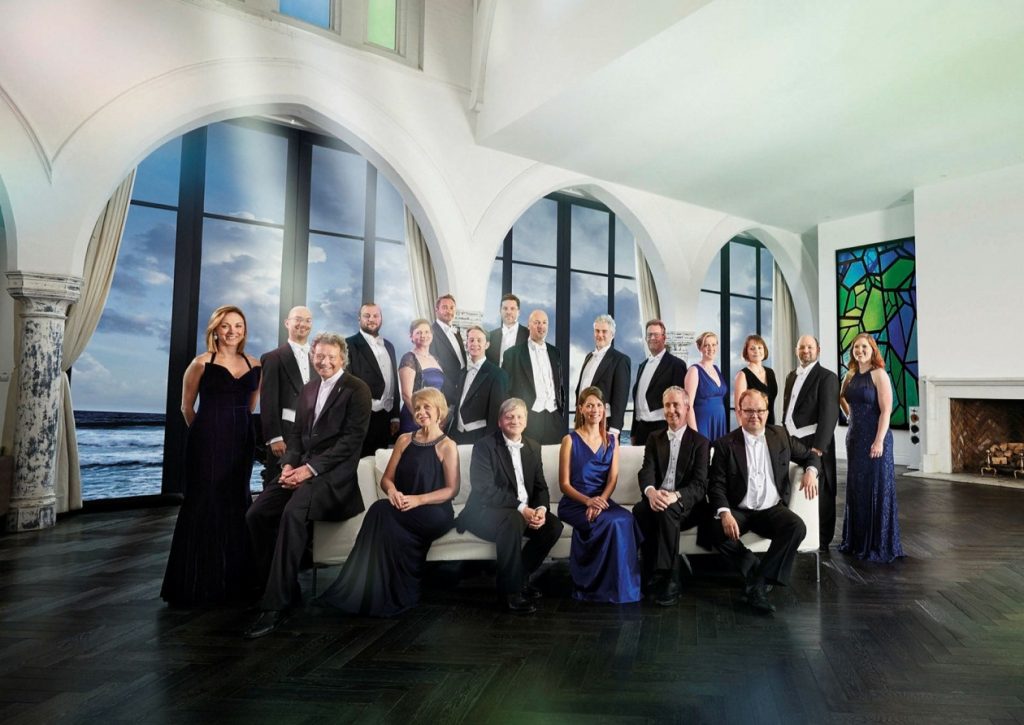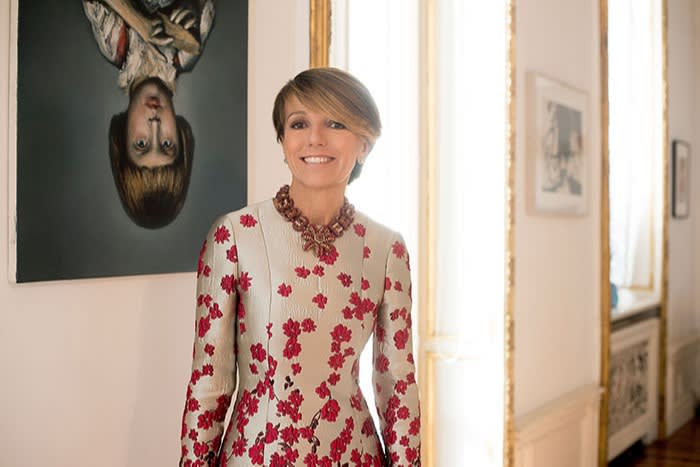
During a chance conversation with staff from London’s St Paul’s Cathedral in the teeth of the pandemic in April, businessman Lloyd Dorfman (pictured above) realised he could help them solve a serious problem.
As the coronavirus toll mounted, curbs were imposed on funeral gatherings and memorial events. The public aspect of grief — the celebration of a life and the chance to say goodbye — was put on hold.
The cathedral had decided to create an online book of remembrance as an outlet for individual and collective mourning — a function historically it has served during wartime and after tragedies such as the 2017 Grenfell Tower fire in London. Unfortunately, the people who would normally have helped create the site had been furloughed.
“I was the right person in the right place at the right time,” says Sir Lloyd, founder of Travelex, the currency exchange group, and a prominent philanthropist. He agreed to fund the national project, which was open to people of any faith or none, and mobilised contacts in the creative industries to link the cathedral with specialists in web design, marketing and communications. They had the site running in five weeks. Rememberme2020.uk has now memorialised some 6,000 people.
“It was an amazing project and a worthwhile thing to have done during the period,” said Sir Lloyd, who has also supported development projects at Westminster Abbey, the Royal Academy and the National Theatre in London.
In the wake of the economic devastation wrought by the pandemic, wealthy donors are being asked to play a bigger role in the arts. Pleas for help from creative industries and public institutions across Europe and the US have been growing as the ramifications of the health restrictions have sunk in. In September, British actors Vanessa Redgrave and Lenny Henry, along with theatre director Trevor Nunn, launched an appeal to raise funds from entrepreneurs and businesses for the arts. “We have to save the arts for everybody,” says Redgrave.
The pain was felt long after the initial spring lockdown was partially relaxed, as social-distancing rules dealt a financial hit to venues needing to rebuild their audiences, and forced museums and galleries to limit visitor numbers. In the UK, the performing arts were particularly hard hit, with thousands made redundant and freelancers left without work but not qualifying for furlough schemes.
Fundraising has been hit in other ways, as galas, dinners and private views for wealthy guests are no longer taking place. As a result, arts organisations and charities have been tapping their donor networks. “Everybody has been inundated with emergency requests,” says Sir Lloyd. “Charities have had to do it because they’re all in dire need. In the arts sector the revenue side of their model has come to a complete stop.”
Many philanthropists have used the pandemic to redirect their giving to the most urgent needs. In September, Vivien Duffield’s Clore Duffield Foundation stepped in with £2.5m of funding for 66 cultural organisations across the UK to support their education and community work, including large institutions such as the British Museum and Tate galleries as well as smaller bodies such as the Turner Contemporary gallery, the Leach Pottery and the Foundling Museum.

John Studzinski, a US-British banker and vice-chairman of investment manager Pimco, set up his Genesis Foundation nearly 20 years ago to help young musicians, artists and other creative professionals from varied backgrounds gain access to professional networks and mentoring. Among the first recipients was Rufus Norris, now artistic director of the National Theatre.
Studzinski furthers this aim with institutions such as the Getty Museum in Los Angeles and the Almeida and Young Vic theatres in London. Since the pandemic deepened, he has increased his emergency grant-giving, to fund freelancers who have been ineligible for government support schemes.
“They’re the nucleus of the creative industries, whether actors, singers, painters or composers or writers. Unless you’re giving them financial support in this environment, you run the risk that a whole generation will throw in the towel and say, ‘I’m going to give up and do something else’,” he says.
Unless you support the arts, the risk is a whole generation will throw in the towel The classical music sector has suffered from a succession of difficulties under Covid-19. Orchestras, opera companies and choirs often have high fixed costs and their audiences tend to be older — a population, research suggests, that will be more reluctant to return to live performances in person.
One classical music group that has a close relationship with Studzinski is The Sixteen, a choir that has established a reputation over 40 years for its performances of Renaissance, baroque and modern choral music — some of which Studzinski commissioned from composers such as James MacMillan.

Harry Christophers, The Sixteen’s founder and director, says the past six months have been “grim”, as the choir has been forced to call off concerts, furlough staff and restructure its business to cope with greatly diminished audiences.
The group does not qualify for funds from the UK government’s £1.57bn emergency support package for the creative industries. After a lifetime spent honing the performance of liturgical and secular music, three of the choir are now making ends meet by working in supermarkets and another is doing a plumbing course. “Everyone is just trying to find ways to combat this awful situation we find ourselves in,” says Christophers.
Like most arts groups, the choir has been branching out into the digital arena to generate income. It put out a virtual performance of John Sheppard’s Libera Nos on YouTube that drew almost 30,000 views and in September performed a concert before a live, socially distanced audience in London, also streaming it to a global one.
Support for the arts comes in many forms. In the visual arts, art buying can help artists and the commercial galleries that shut in March before reopening under strict distancing and hygiene guidelines. But have wealthy collectors continued to buy? The first major post-Covid study of the art market, published in September by consultancy Arts Economics and UBS, surveyed 120 people in the US, UK and Hong Kong with a net worth, excluding property and business assets, of at least £1m, who had also spent more than £10,000 on art and antiques in the past two years.
Nearly all (92 per cent) of collectors had bought pieces in the first six months of the year; a majority had spent more than $100,000 in the period. Collectors were also highly aware of the precarious position of the commercial gallery sector, the survey found. Some 64 per cent of respondents were very or extremely concerned about the potential closure of galleries in 2020.
For galleries, online channels have been essential to reach potential buyers under lockdown. Others have promoted digital art itself.

Collector Patrizia Sandretto Re Rebaudengo with a painting by Glenn Brown
Patrizia Sandretto Re Rebaudengo is an Italian philanthropist who has been collecting art since 1992. She set up a foundation and private museum in 1995 in Turin that holds more than 1,500 works, which she lends to museums and galleries. She also commissions new works and supports young as well as female artists. The Turin foundation is both an exhibition centre and an educational institution.
After the virus threatened these long-established activities, Re Rebaudengo realised she would have to expand the foundation’s remit, commissioning digital art that could be created and displayed safely. “Since the pandemic, we have started making digital commissions — this is not something we did before,” she says. She has also expanded the foundation’s commissioning of outdoor installations, placing works in the grounds of a palazzo in Guarene d’Alba, near Turin, which hosts her course students in normal times. “It’s important because the open-air setting offers people a way of seeing art as they walk in the countryside, not in an enclosed space. It’s a great opportunity,” she says.
Another art world patron who has turned to technology is Francesca Thyssen-Bornemisza, whose collection in Vienna holds more than 900 contemporary works acquired or commissioned from artists since 2002. Realising the commissioning wellsprings for contemporary artists were drying up, she says: “We didn’t want to be part of that.” She came up with a project called “st_age” (short for the Streaming Age) in which artists around the world were commissioned to create a short film or sound work that have been published online since September. One example comes from the Congolese contemporary dancer Dorine Mokha, who created a film tackling issues facing the local LGBT community. Another is a narrative and musical work by London- and Delhi-based artist Himali Singh Soin, inspired by her journey to Antarctica with her explorer father.
Studzinski believes strongly that digital innovations are not a temporary fix but will become embedded in the way artists and institutions work. “There’s a lot of banging on in the arts community about ‘When are we going back to the way we were before?’ We’re never going to go back. The new normal is going to have a strong digital element,” he says.
We’re never going back. The new normal will have a strong digital element By way of illustration, he points to young opera groups that are challenging the conventions of their art form by broadcasting five- or 10-minute operas via social media channels, and to another innovation he encountered when watching a live-streamed performance at the Salzburg Festival in August. During the interval in Richard Strauss’s Elektra, he was invited into a virtual “side room” to join a Zoom discussion with nine other audience members. “It was very interesting, because I wouldn’t have done that before. It puts you in direct communication with complete strangers who have the same passion as you,” he says.
Digital distribution still faces hurdles, however. A survey in September by Cambridge-based consultancy Baker Richards found that of the respondents who would consider engaging with arts events and performances digitally, 79 per cent said they would be willing to pay something for it. Since lockdown, however, only 12 per cent of those who had engaged with digital art content, such as live-streamed drama, opera, ballet or music, had paid for it.
The role of philanthropists arguably will become even more important to the arts as the world enters a period in which further restrictions are threatened by a resurgence of virus cases and corporate and government support comes under pressure. Studzinski thinks the wealthy are well placed to respond, after years of favourable stock market performance and low interest rates.
“In this environment, philanthropists have had to go through a rethink about their lifestyles, their friends and family and the role of wealth. The reality that is a lot of people have realised they’ve done really well and that a lot of other people are much less fortunate.”